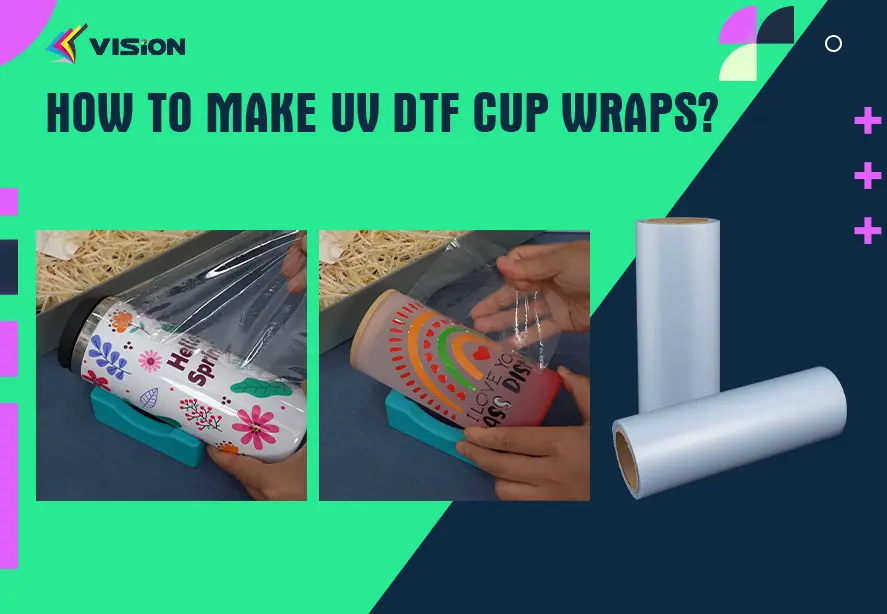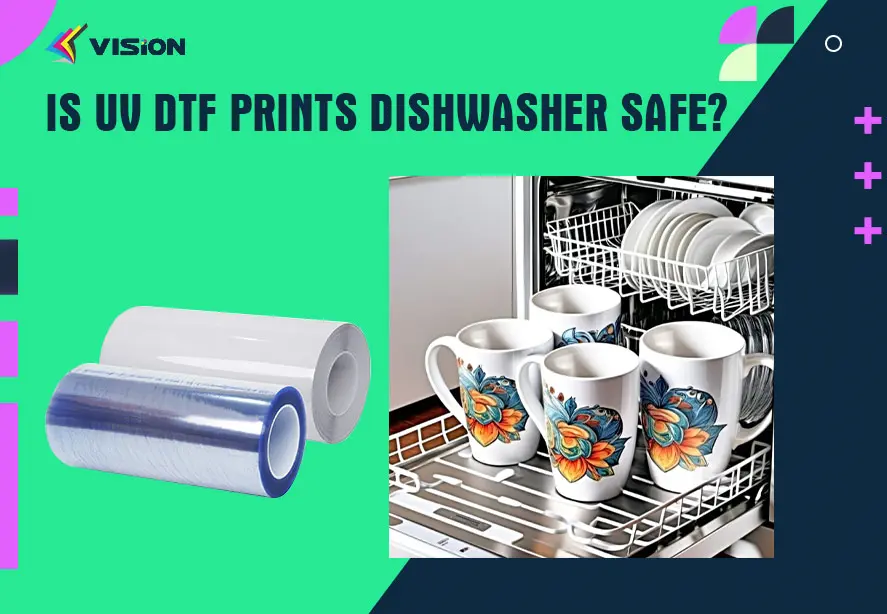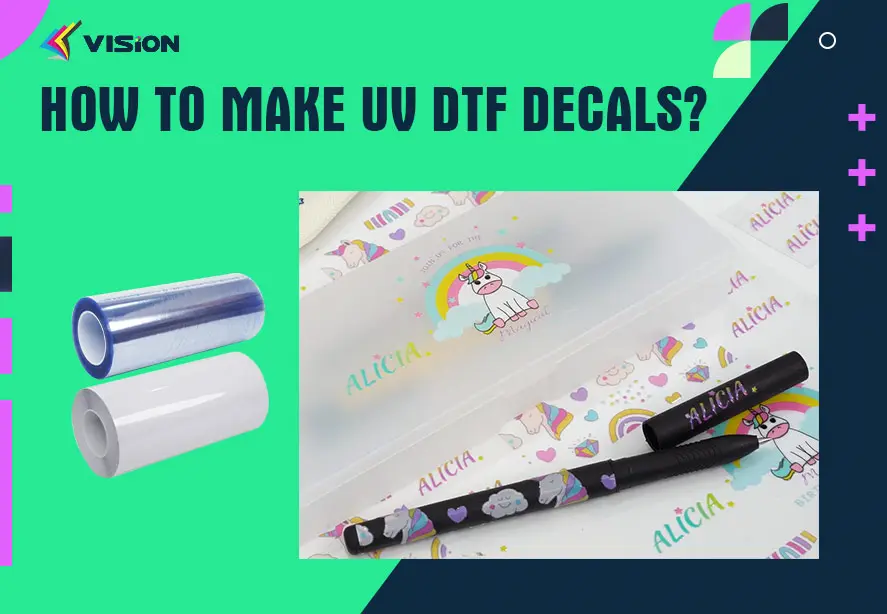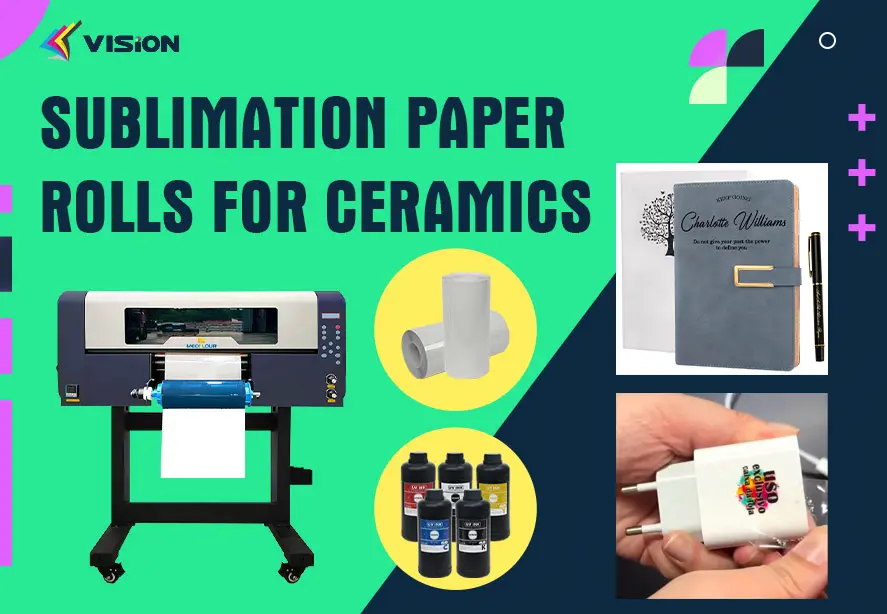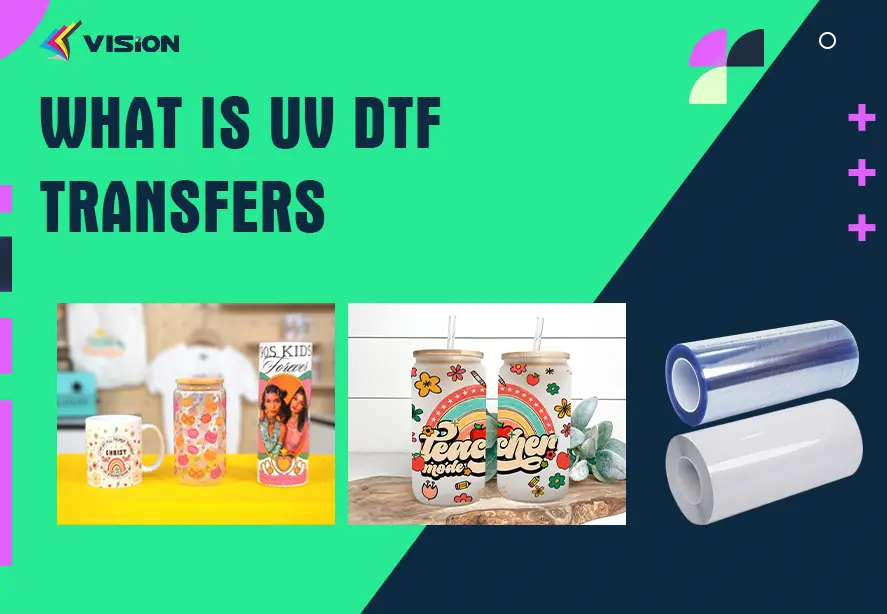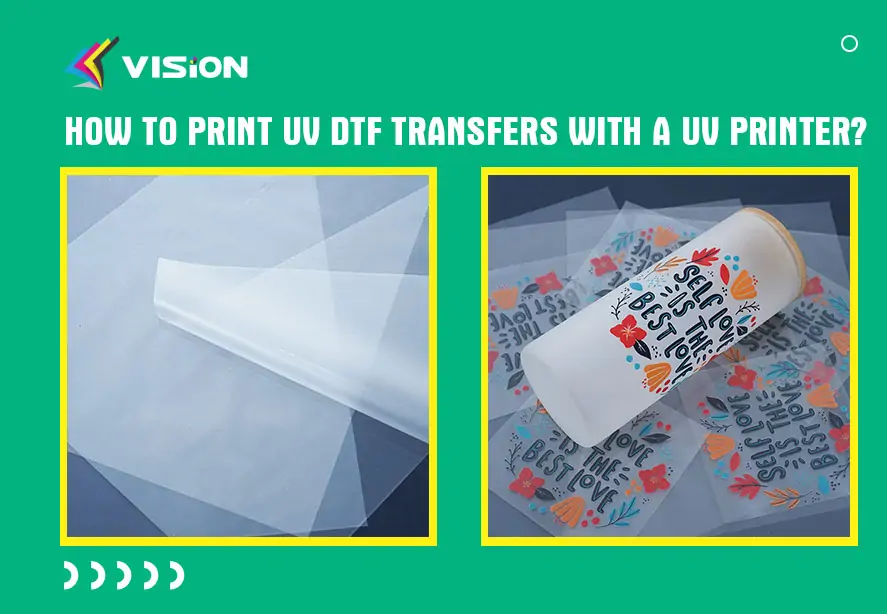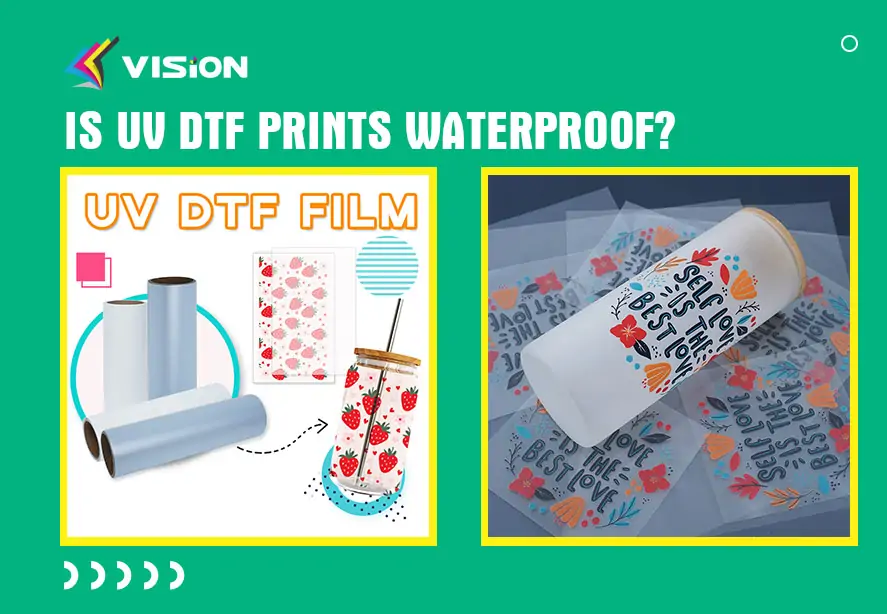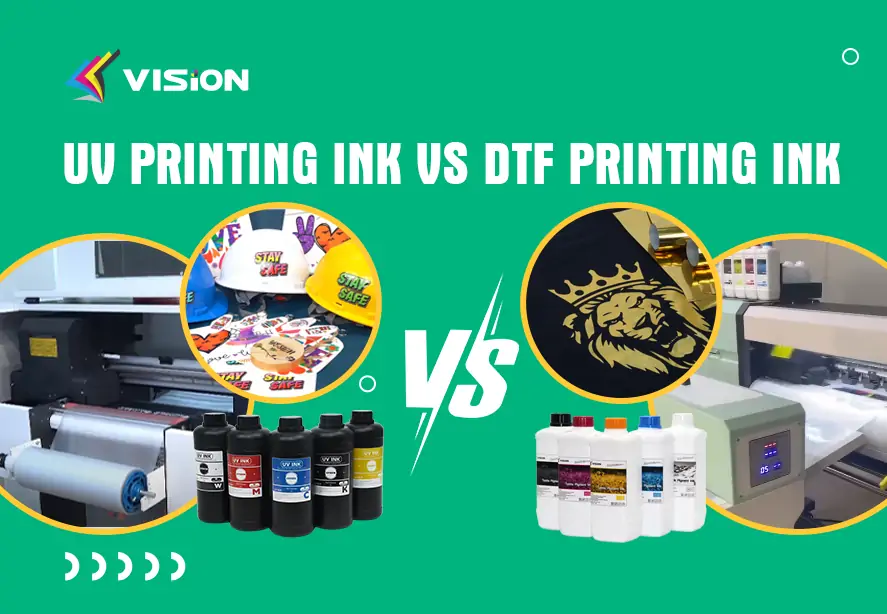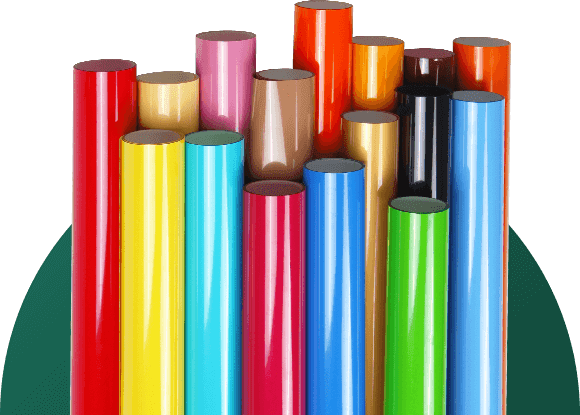
Blog
Can you use UV DTF on shirts?
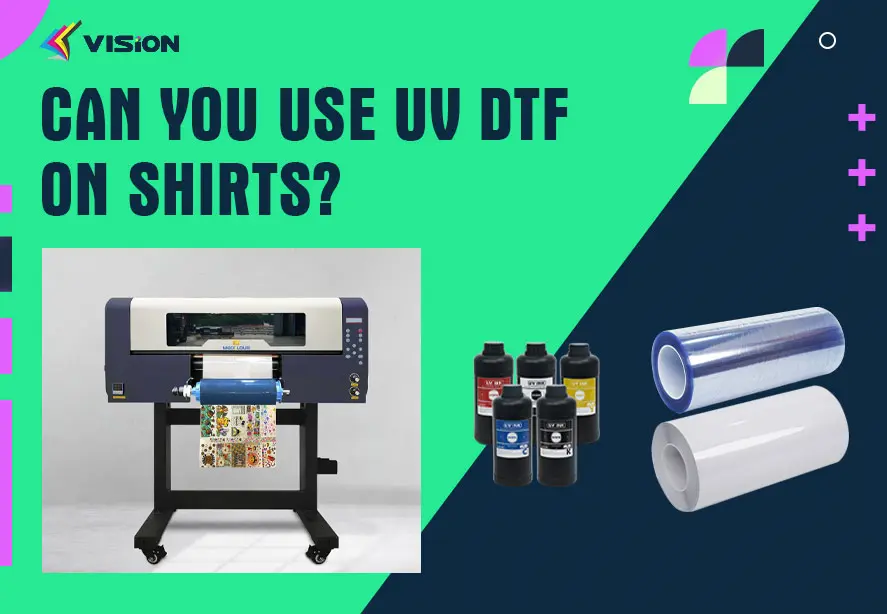
UV DTF (Direct-to-Film) is a printing technique that utilizes UV-cured inks, which are directly applied onto a thin film or substrate. Once the ink is applied, it is transferred onto a surface to create vibrant, high-resolution prints with fine details. This method is known for its ability to produce intricate designs and vivid colors. UV DTF transfers are suitable for a wide range of hard surfaces such as glass, plastic, wood, and metal, but UV DTF is not designed for use on shirts.
What are the Benefits of UV DTF Printing?
Durability and Scratch Resistance
One of the biggest advantages of UV DTF printing is the durability of the printed designs. The UV-curable inks are highly resistant to fading, cracking, and scratching, making the prints long-lasting even under wear and tear.
Vibrant Colors
UV DTF offers superior color quality with deep saturation, providing vibrant, crisp, and detailed prints. The inks dry quickly and maintain their vibrancy over time.
No Need for Pre-Treatment
Unlike some other printing methods that require pre-treatment of the fabric or material, UV DTF can be used directly on a wide range of substrates without additional steps.
Fast Curing Time
The UV curing process is extremely quick, which speeds up the overall printing and production timeline. Once the ink is exposed to UV light, it hardens almost instantly, reducing the time required to finish prints.
Print on Multiple Materials
UV DTF can be applied to various materials beyond fabrics, including plastic, wood, metal, and ceramics.
What Materials Can It Be Applied To?
UV DTF printing is incredibly versatile and can be applied to a wide range of materials, including:
Plastic: Including PVC, acrylic, and other plastic-based products.
Wood: Ideal for printing on wood products like signage and furniture.
Metal: Perfect for customizing metal objects like phone cases, jewelry, or promotional products.
Ceramics: Can be used for printing on ceramic items, such as mugs or tiles.
Glass: UV DTF can be applied to glass for decorative or branded glassware.
This material flexibility makes UV DTF printing a versatile choice for businesses looking to offer customized products across various industries.
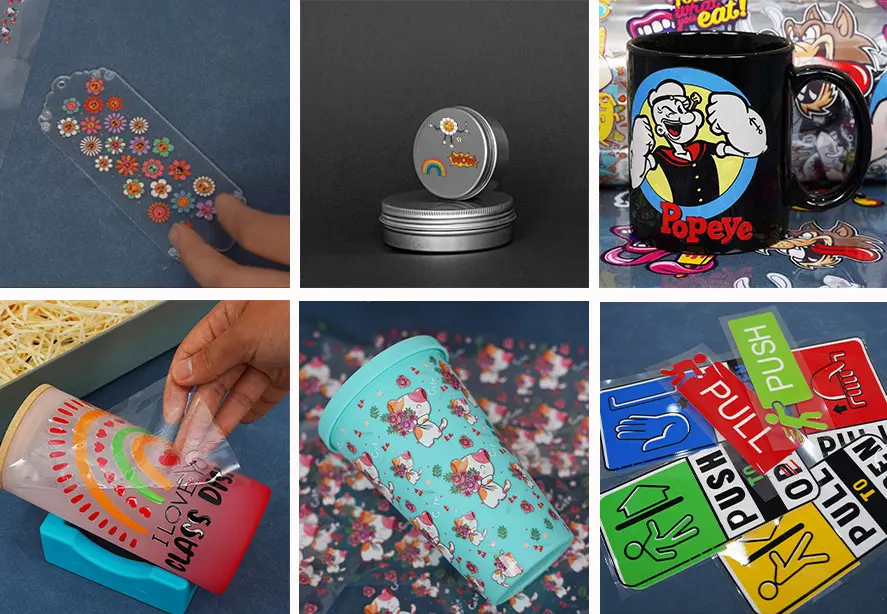
uv dtf prints
How Long Does It Take for UV DTF to Cure?
One of the key advantages of UV DTF printing is the rapid curing time. The UV inks cure almost instantly when exposed to ultraviolet light, typically in just a few seconds. Once the ink is exposed to the UV light, it hardens immediately, which significantly reduces the time needed to finish a print compared to traditional methods. This makes UV DTF an efficient and fast solution for high-volume printing.
Can You Use UV DTF On Shirts?
NO. UV DTF printing is not ideal for printing directly onto fabrics like T-shirts. The UV inks used in this method do not adhere well to fabric fibers, which can result in the print peeling or cracking over time. Additionally, because fabrics are flexible and prone to stretching, the print may break or the transfer could peel off.
For printing designs onto shirts, the DTF (Direct-to-Film/Garment) method is a better choice. This process involves printing designs onto a special film and then transferring the design onto the fabric using a heat press. DTF printing is also versatile and can be applied to other materials such as hats, bags, and shoes.
Is It Waterproof?
Yes, UV DTF prints are generally waterproof. The UV inks used in this process are highly resistant to water, making the prints durable and long-lasting even under wet conditions. This makes UV DTF an excellent choice for products that are likely to come into contact with water, such as custom phone cases, glasses, mugs and cups.
UV DTF printing offers impressive durability and vibrant colors, but it may not be the best choice for T-shirt printing if you’re looking for a soft, flexible finish. While it is versatile and works well on a wide range of materials, UV DTF is better suited for custom products like promotional items, signage, or accessories.
Related:
Is UV DTF prints waterproof?
How to print UV DTF transfers with a UV printer?
How long does UV DTF Prints last?


